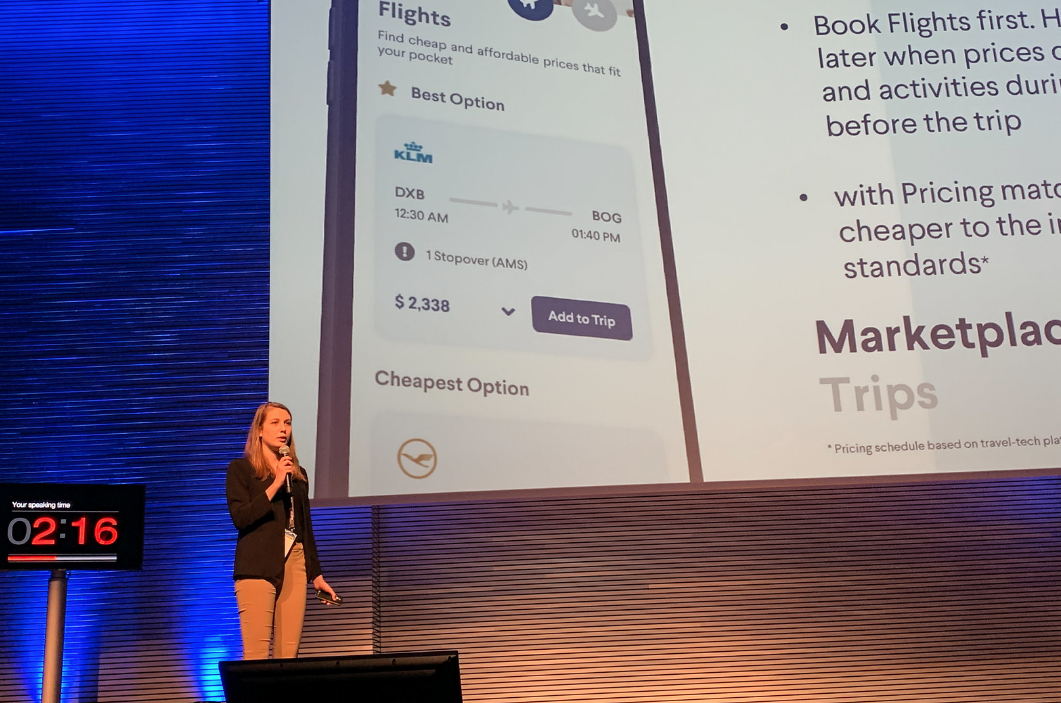Outsourcing: The Solution to Costly Recruiting of Tech Talent
What is Outsourcing?
Outsourcing is a business practice in which a company hires another company or an individual to perform tasks, handle operations or provide services that are either usually executed or had previously been done by the company’s own employees.
The outside company, which is known as the service provider or a third-party provider, arranges for its own workers or computer systems to perform the tasks or services either on site at the hiring company’s own facilities or at external locations.
Companies today can outsource a number of tasks or services. They often outsource information technology services, including programming and application development as well as technical support. They frequently outsource customer service and call service functions. They can outsource other types of work as well, including manufacturing processes, human resources tasks and financial functions such as bookkeeping and payroll. Companies can outsource entire divisions, such as its entire IT department, or just parts of a particular department.
As the CTO/team lead of XYZ app, what factors can you count on outsourcing providers to achieve organizational goals?
1. Cost-effectiveness
An outsourcing company that tackles mobile app development offers affordable project packages with detailed quote breakdowns. Discussions with your chosen outsourcing provider will include ironing out project timetables while keeping within your agreed budget, and the final product is one to be proud of. You also have a lower risk of incurring large overhead expenses, hassle-free scalable teams, experience, and aftermarket services such as marketing, customer service, and moderation.
Moreover, many companies find that it saves them a lot of money if they outsource app development. This can be true whether you’re outsourcing on or offshore. It tends to be cheaper to outsource than hire new employees if needed or take the focus off core projects for your current team members.
2. Team organization
Outsourcing companies who specialize in mobile software development will delegate a professionally-managed talent team to the project. It is important to compile accurate legal documentation for the project, from design specs to non-disclosure agreements. You can arrange for the team to work on specific areas of your program, if you intend to handle some of the app’s core functions yourself. Workflow management tools will track the activity schedules.
3. Cross platforming
App development companies recognize the need to configure the product to run on Android, iOS, Windows, as well as personal computers for web-based applications. Even if you start on one platform, defining which future platforms your app should should be available to at an early stage of build, will save significant costs in rebuilds to retrofit the framework coding. Deciding later you want to explore iOS and have only planned for Android, is almost a complete rebuild.
4. Expertise
Access to expert developers: If you don’t have that expertise in-house, outsourcing can be the answer to finding highly-qualified developers. For example: Preparing an app that runs across several platforms and functions well require various programming codes and will justify hiring a development team who can write highly-functional code in those languages. Each coder’s programming expertise will include C++, C#/.NET, Java, and more, covering at least Android and iOS. In parallel, the graphic designers attached to the project will help you design interfaces that are easy-to-follow with intuitive functions for a comprehensive user experience.
5. Quality assurance
A reputable software development outsourcing company will have a dedicated QA team with a state-of-the-art lab. Projects will go through strenuous quality control and troubleshooting to locate bugs, and make your product as glitch free as possible. This includes manual and automation testing, security testing, Functional testing and many more QA control services.
6. Security
The best apps out there can be vulnerable to hacks if they’re not carefully subjected to security test. A dedicated and skilled in-house quality assurance lab is meant to take on this challenge. Business apps, for example, should have solid cybersecurity mechanisms implanted to safeguard connections to customer databases, credit card transactions, and other core elements of personal data, not to mention the reputation of the company itself.
7. Marketing plan in place
The success of your app will rely heavily on showcasing its features to an interested market audience and to convince them of the benefits. Your development team should collaborate with you on this plan. Even the product is not launched yet, but a dedicated page with well-crafted app marketing information is paving road for the success of the product release date.
8. Continued service
A successful launch is only half the work and your development team can be put in place for patches and new features down the line. A tech maintenance team will take care of your servers while a customer service team will be ready to handle inquiries.
9. Time savings on development
An outsourced team can often work steadily on your project, perhaps even around the clock in different timezones. If you kept it in-house, the app project might be competing with others for resources.
10. Compliance may be more straightforward
When you outsource, compliance is part of the deal, so you’re not adding any extra burden to your team for going back and checking any discrepancies.
11. Flexibility
You don’t need to hire and train people or run the whole project. Outsourcing gives you some flexibility to just get on with your regular work.
What common practices to expect from outsourced teams?
Extensive training and team-building activities:
- Too often managers become preoccupied with the plans and technical challenges of the project and assume that people issues will work themselves out over time. Smart firms recognize that people issues are as important, if not more important than technical issues. They train their personnel to work effectively with people from other organizations and countries.
- This training is pervasive. It is not limited to management but involves all the people, at all levels, who interact with, and are dependent upon outsourcers.
- In addition, the training is augmented by inter-organizational team-building sessions designed to forge healthy relationships before the project begins. Team-building workshops involve the key players from the different firms.
Well-established conflict management processes in place:
- Outsourced projects are susceptible to conflicts since people are unaccustomed to working together and have different values and perspectives. Successful firms invest significant time and energy up front in establishing the “rules of engagement” so that disagreements are handled constructively.
- Escalation is the primary control mechanism for dealing with and resolving problems. The basic principle is that problems should be resolved at the lowest level within a set time limit (say, 24 hours), or they are “escalated” to the next level of management.
- Key personnel from the respective organizations are brought together to discuss potential problems and responses. This is usually part of a coordinated series of team-building activities discussed earlier. Particular attention is devoted to establishing the change management control system where problems often erupt.
- Principled negotiation is the norm for resolving problems and reaching agreements. This approach, which emphasizes collaborative problem solving
Frequent review and status updates:
- Project managers and other key personnel from all involved organizations meet on a regular basis to review and assess project performance. Collaborating as partners is considered a legitimate project priority which is assessed along with time, cost, and performance.
- This provides a forum for identifying problems not only with the project but also with working relationships so that they can be resolved quickly and appropriately.
- More and more companies are using online surveys to collect data from all project participants about the quality of working relations. With this data one can gauge the “pulse” of the project and identify issues that need to be addressed.
- Comparison of survey responses period by period permits tracking areas of improvement and potential problems. In some cases, follow-up team-building sessions are used to focus on specific problems and recharge collaboration.
- Finally, when the time to celebrate a significant milestone arrives, no matter who is responsible, all parties gather if possible to celebrate the success. This reinforces a common purpose and project identity. It also establishes positive momentum going into the next phase of the project.
Co-location when needed:
- One of the best ways to overcome inter organizational friction is to have people from each organization working side by side on the project. Smart companies rent or make available the necessary accommodations so that all key project personnel can work collectively together. This allows the high degree of face-to-face interaction needed to coordinate activities, solve difficult problems, and form a common bond.
- This is especially relevant for complex projects in which close collaboration from different parties is required to be successful.
Fair and incentive-laden contracts:
When negotiating contracts the goal is to reach a fair deal for all involved. Managers recognize that cohesion and cooperation is undermined if one party feels he or she is being unfairly treated by others. Performance-based contracts, in which significant incentives are established based on priorities of the project, are becoming increasingly popular when outsourcing.
Your team decided to look for help with the app development from external resources, and what are the next steps?
Step 1: Know what you want to achieve from the app
- Before you decide that outsourcing mobile app development is what you’re looking for, you need to have a detailed definition of your mobile application you want on the outcome.
- You should spend time researching similar applications, and write down what you want your app to do. For example: Do you want your app to have social media integration? What are the login features? Are there in-app purchases? Do you want the app to be compatible with Google/Android or both?
Step 2: Find app development team
- Apparently, knowing the type of app you want will define what you’ll hunt for in development team. Now you can look for developers who is skilled in creating the kind of apps you desire. For instance, if you want an app compatible with an iOS system, you’ll surely need developers with a background in creating iOS compatible mobile applications, or if you want to develop a game, you will look for the top in mobile game developers community.
- There are different ways of how to find development team for your app. Beside requesting for quotes from domestic companies here in United States, you can put a team search request on our homepage.
Step 3: Talk with the team before hiring
- To outsource Android development or the iOS one, you better get to know the developer before the hire. Use an instant messaging program to discuss the task with a candidate in real time instead of email correspondence. Microsoft Teams, a replacement of Skype is one of the most popular ways to communicate with mobile app developers interested in working your job. However, you can also use Google Hangouts, Slack, and other popular messaging platforms to conduct developer interviews as well as for project updates and instructions.
- Video conferencing is another good option you can use, and this feature is available through a number of messaging platforms. Through video conferences, you can get to know the developer and pick up on non-obvious but important nuances not available with text conversation.
- One of the most valuable skills is a clear communication. It’s a good idea to ask the experts about their experience in outsource iOS app development, Android or hybrid as well.
Step 4: Negotiate the contract
- Cost is one of the important factors that influences your decision. However, it is more important to look at the values of the whole deal that the team bring to the table, and all the qualifications you are looking for.
- A benchmark tool of development cost estimator from domestic resources and global resources can give you a big picture.
Step 5: Establish important milestones
- Once you choose the team for your needs, it’s a good idea to discuss project milestones. Milestones will be points in the project where specific tasks need to be completed. The milestones can serve as goal posts, so you know where the project stands and so you don’t get nervous if your developer goes quiet for a few days while working on your project.
- The milestones or timelines allow you to assess the development builds over the course of time. It also allows you to approve every step of the process.
Conclusion
Outsourcing is a vital part of a business’s decision. There are various factors that plays an important part in this decision, such as quality, cost and other factors. Customers also a part of this decision, too. We hope from this article, you can choose an effective outsourcing method and bring the best quality to your company. At ENVZONE, we are willing to cooperate with you and adjust our products to meet all customers. Contact us to develop your potential.









